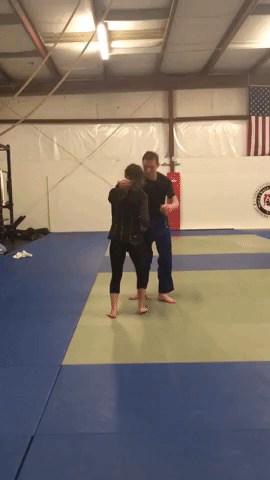5 Ways to Transfer Your Judo Techniques to Wrestling
In the combat world, we often see technique translating from one sport to another. One of the most translatable combat cross-overs, is judo to wrestling. When I started wrestling, I had difficulty with my technique as judo was my original combat sport. This created a strange style of wrestling for me at first, as I didn’t know how to combine the two. However, I started seeing a progression in both sports once I learned how to marry the two styles. Modifying the moves from judo to wrestling can be a bit tricky, but doing so can really improve your skill set. Applying judo concepts to wrestling throws will help to create a better understanding of throws overall. This article is a compilation of the judo throws I have been able to successfully incorporate into my wrestling.
The physics of judo throws vs. wrestling throws
In both wrestling and judo, the concept of action-reaction is essential. The main difference between judo and wrestling is the concept of kuzushi (off-balance) and posture. The creation of this off-balance is very different between the two sports. Due to the judogi (robe-like uniform judoka wear), off-balance is generated easier due to the ability to grip your opponent’s gi. Also, the posture used when doing a judo throw is very straight up. However in wrestling, the tie ups must be modified in order to generate enough momentum for a judo throw. A wrestling stance also changes the way a judo throw is performed in order to be effective.
Making the Adjustments
Adjustments of judo throws to wrestling are primarily based on compensating for the lack of a gi. The footwork for the throws remains the same, with the main changes occuring in the grips/tie-ups. There will also be a difference in the way a reaction is generated, since a wrestler moves differently in response to being thrown from that of a judoka.
Ogoshi
An Ogoshi throw is made possible by getting your hips through and sending your opponent flying to to their back. A judoka will use the gi as ameans to grip and pull their opponent close enough to throw. However, the best position when you’re translating this to wrestling will be in an over/under position. Your arms must be locked down tightly by trapping your opponent's arm to your rib cage with your elbow, and gripping their back with your other hand. In order to replicate this movement, you must practice pulling your opponent towards your body and sending your hips through just like in judo.
Ippon seonage
An ippon seonage throw is generally done from a standard gi grip. Once the off balance is created, the thrower will place their dominant arm in a position in which it looks like they’re “making a muscle” and will place it underneath and snug into their partner’s armpit. At this point, the partner is loaded onto the back and thrown. In wrestling, this is often done from an over/under position. The off balance can be easily created through pulling the overhook, and getting your partner on their toes.
Harai-goshi
Harai-goshi can be done with an around the back grip or an around the head grip. With these grips, the judogi provides little difference. This throw is similar to that of a “head and arm” in wrestling. However, there is a stark difference in the execution of the throw. Rather than simply throwing your hip through, you also reap with you leg. This reap is aimed towards the opponent’s outer thigh, and is the thigh on the same side as your dominant side (you will reap with your dominant leg). This throw is especially brutal, since it captures the opponent’s leg to further ensure the throw.
Footsweeps
Footsweeps are a bit more tricky to set up in wrestling. If done properly, it will make your opponent afraid of even having their feet around you. A common set up for footsweeps in wrestling is done with an over/under grip. The opponent is moved in a circle through pushing/pulling with the over/under and the foot closest is swept. Footsweeps can also be done in wrestling with a two-on-one grip, in which the two-on-one is thrown and the closest foot is swept.
Uchi Mata
Uchi mata is similar to harai-goshi in that it is also a reap. In judo, uchi mata is generally performed from an over the back grip on the gi. In wrestling, uchi mata is super effective from an under-hook. It is essential that when doing an uchi mata in wrestling that one throws up the under-hook as they reap towards the inner thigh and throw.
Ultimately, it is clear that there are many benefits to including judo in one’s wrestling game. These are the moves that can score a critical 4 or 5 pointer, which could turn around the outcome of a match. Additionally, learning these moves will add more variety to one’s arsenal. Sometimes, keeping an open mind in your training journey can make all the difference.






